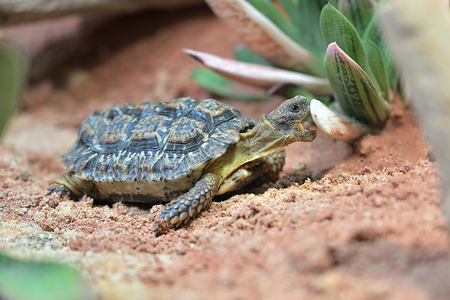Speckled dwarf tortoise
Chersobius sigantus

- FamilyTestudinidae
- Length7 - 9 cm
- HabitatSouth Africa
Reproductive adaption
At about 70 % of their final body size (approx. 10– 12 years), turtles become sexually mature. The Speckled dwarf tortoise has relatively large eggs, measuring around 4 cm. In order to lay eggs, the female’s pelvic canal must be widened with the help of hormones – an uncommon adaptation among turtles.
Climate change losers
Speckled dwarf tortoises are perfectly adapted to living in rock crevices thanks to their flat shell, which also features camouflage colouration and pattern. However, the populations of this tortoise species are declining due to their small distribution area and unique semi-desert habitat. Semi-deserts are particularly affected by climate change and decreasing rainfall.
The Speckled dwarf tortoise is considered the world‘s smallest tortoise species.
Distribution
